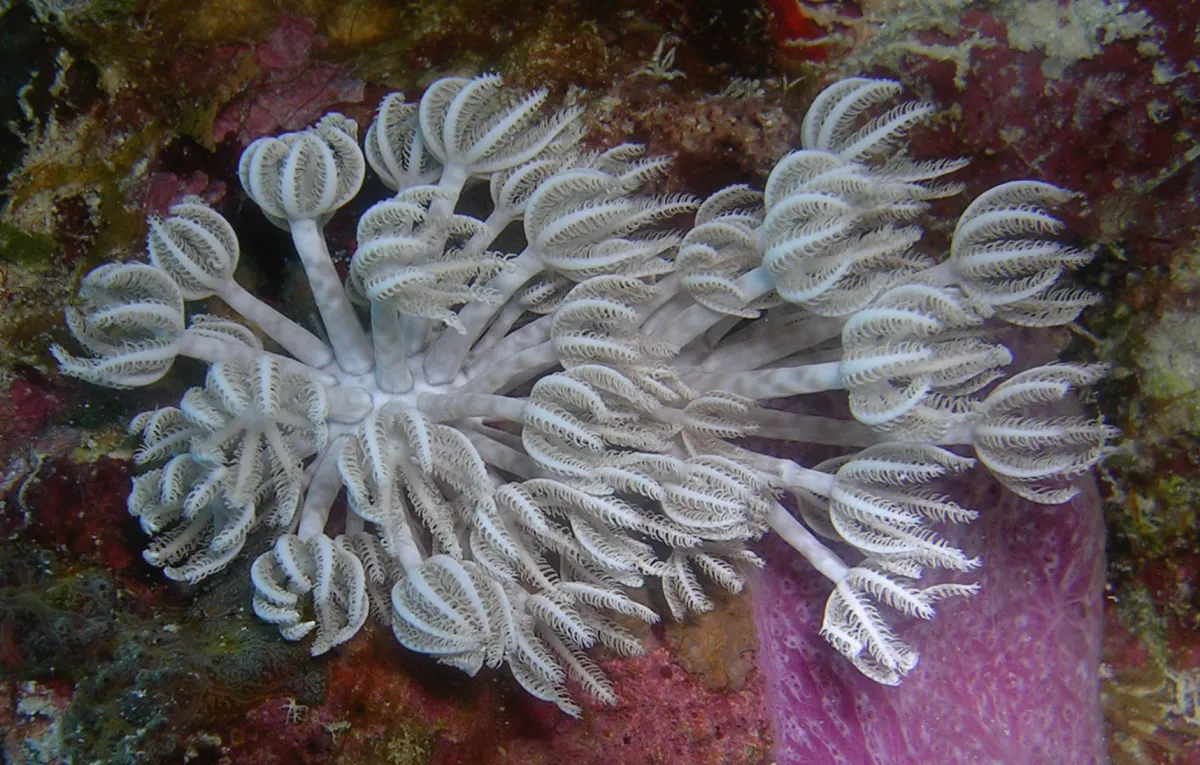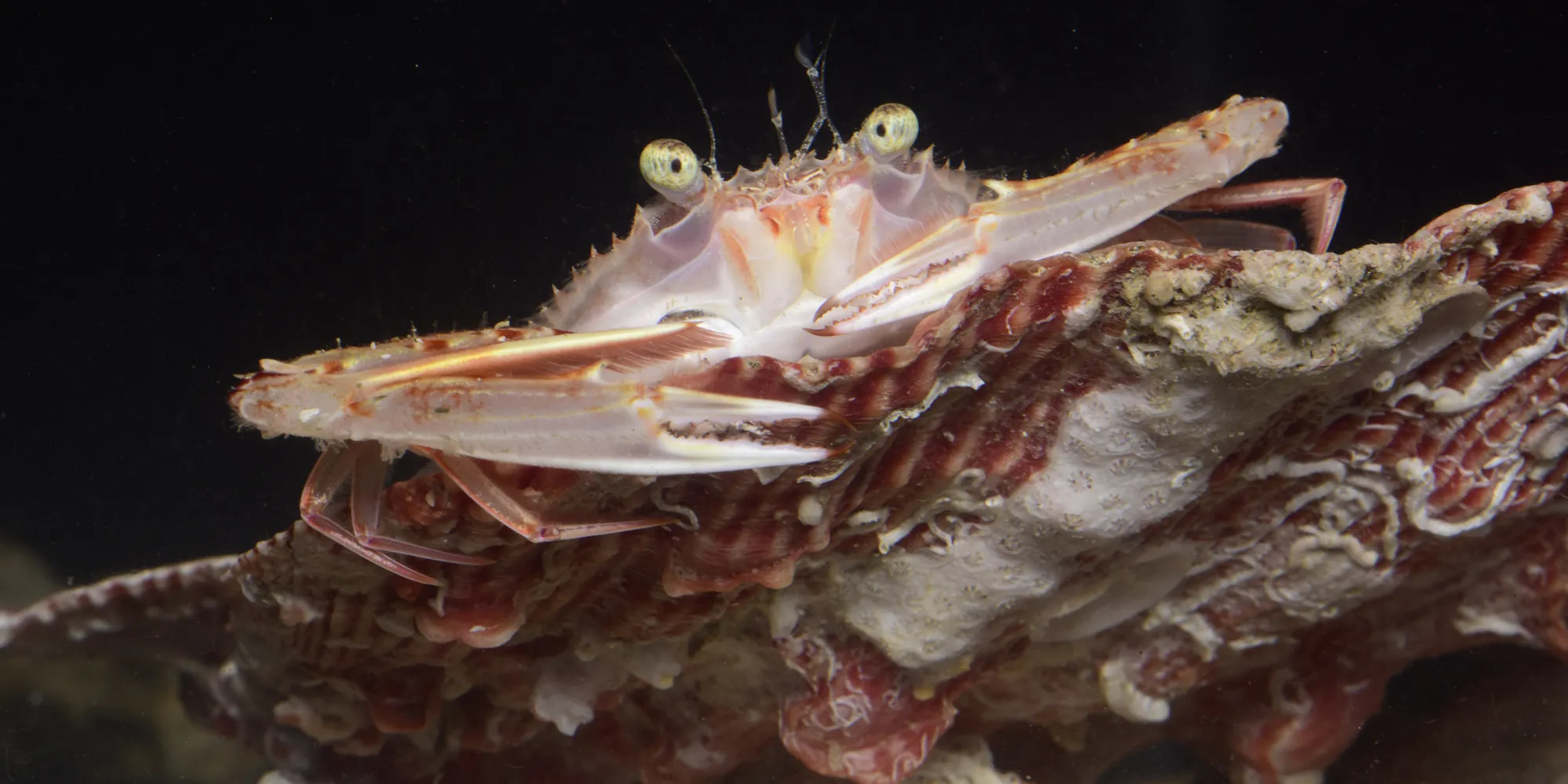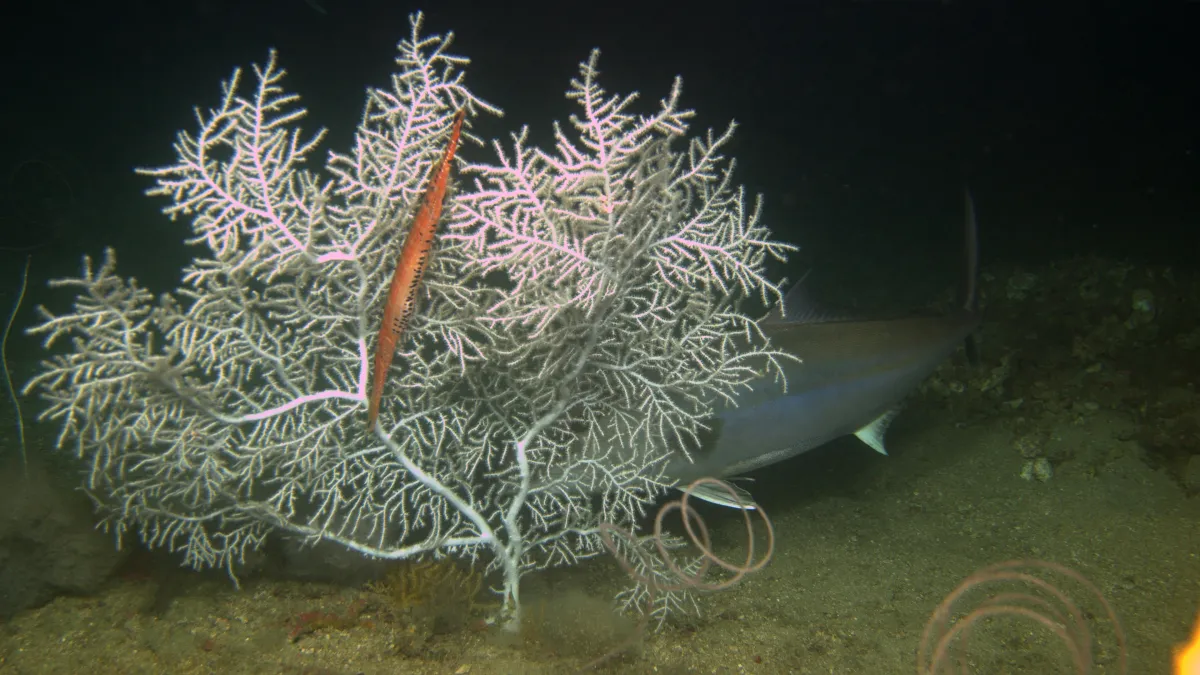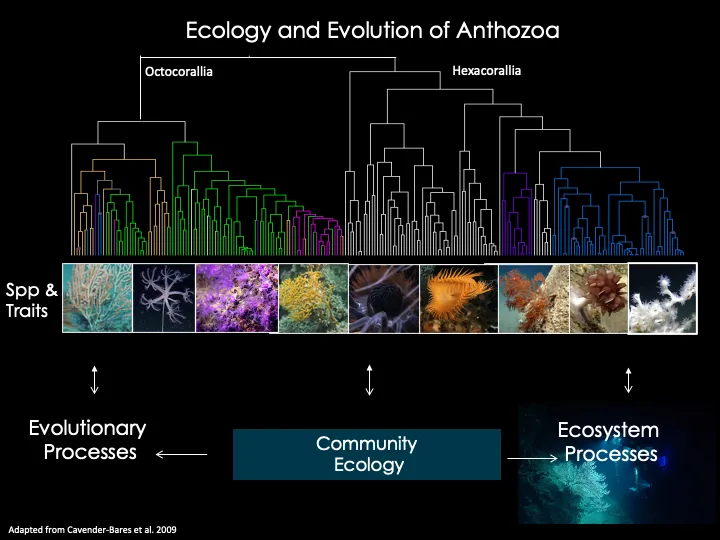
Search

Current Projects
PurSUIT of Indo-Pacific Soft Corals
The Indo-Pacific zooxanthellate octocorals: an integrated approach to species delimitation, phylogenetics and biogeography (in collaboration with C.S. McFadden, PI, Harvey Mudd College)

Alcyonacean soft corals are the second-most abundant benthic organisms on most coral reefs in the Indo-Pacific, where they compete for space with the reef-building scleractinian corals. Differences in responses and abilities of soft corals to adapt to changing ocean conditions may be expected to shift the future dynamics of these two groups in ways that will fundamentally alter the structure and function of coral reefs. Relative to the well-studied scleractinians, however, little is currently known about the ecology of soft corals: we do not know how many and which species co-occur and contribute differentially to these diverse communities, or how soft coral assemblages change over space and time. The overarching goal of this project is to address this need by validating all species of zooxanthellate soft corals found throughout the Indo-Pacific and generating resources to facilitate their identification. We will integrate DNA barcoding, sequence capture of ultraconserved elements and exon loci, and documentation of morphological characters to delimit species among ~5000 specimens available in museums or new collections. Delimitation and validation of soft corals from across the IP will facilitate the identification of species in future studies of coral reef ecology and biodiversity, leading to increased understanding of the dynamics of coral reef communities experiencing global ocean change. Recognition of species boundaries will enable the identification of geographic regions with high species richness, high endemicity or phylogenetically unique lineages that may merit special protection.
PurSUIT is funded by the National Science Foundation
CYCLE
Coral Ecosystem Connectivity in the Gulf of Mexico (in collaboration with S. Herrera, PI, Lehigh University)

With continued anthropogenic threats in the marine environment, there is an urgent need to make decisions that will lead to the effective management and conservation of vulnerable coral ecosystems. Essential to effective conservation and preservation efforts is determining the degree to which populations are connected across environmental and spatial gradients, allowing us to better predict resiliency or vulnerability of ecosystems to environmental change. CYCLE seeks to understand the processes that shape 3D connectivity networks in shallow (15-40m), upper mesophotic (40-85m), and lower mesophotic (85-150m) coral ecosystems of the northwestern Gulf of Mexico. To achieve this overarching goal, a diverse team from the NMNH, Lehigh University, GA Technology, University of New Brunswick, USGS, and NOAA are integrating state-of-the-art genetic, chemical, and ecological analyses with high-resolution habitat suitability, oceanographic and larval dispersal modeling approaches.
The establishment of marine protected areas has been identified as one of the key restoration strategies for benthic communities impacted by the Deepwater Horizon oil spill. The CYCLE team is committed to providing ecosystem connectivity information and tools directly to resource managers in the GoM, with a focus on the Flower Garden Banks National Marine Sanctuary. The Flower Garden Banks National Marine Sanctuary has proposed to expand the boundaries of current protected areas to encompass additional coral sites. This collaborative effort links research that will enhance our understanding of GoM ecosystems, with effective management of MPAs to restore degraded coral communities and preserve long-term viability of coastal ecosystems.
CYCLE is funded by NOAA NCCOS
MDBC
Mesophotic and Deep Benthic Communities (MDBC) Partnership

The NMNH has formed a new partnership with the project teams charged with restoring and conserving habitat in deep waters of the Gulf of Mexico. The Mesophotic and Deep Benthic Communities (MDBC) portfolio, led by the National Oceanic and Atmospheric Administration (NOAA) and Department of the Interior (DOI), consists of four projects working to restore Gulf of Mexico ocean floor ecosystems impacted by the Deepwater Horizon oil spill. Objects of these MDBC projects include seafloor mapping, coral propagation, and habitat assessment to improve our understanding, inform management, and ensure resiliency of mesophotic and deep benthic communities.
CORAL SYSTEMATICS
Resolving the evolutionary relationships of corals across deep to shallow time scales can help advance our understanding of coral reefs and the diverse communities that they support. Yet, our knowledge of the evolutionary relationships of corals and their sea anemone relatives is severely lagging behind numerous other groups of metazoans. We are just now producing the genetic data needed to not only help discern species for basic diversity assessments, but to also investigate diversification of anthozoans across deep time. With the advent of these new molecular tools, we can now address fundamental questions on diversification of corals across a wide range of environments and time scales.
The NMNH Coral Lab is working with collaborators worldwide to: 1) illuminate species boundaries and evolutionary relationships of corals, 2) provide more accurate coral diversity assessments from local to regional scales, 3) reconcile molecular-based phylogenies with morphological characters, 4) use new imaging and molecular techniques on type specimens to facilitate assignment of correct binomens to species, and 5) complete species descriptions and taxonomic revisions.
